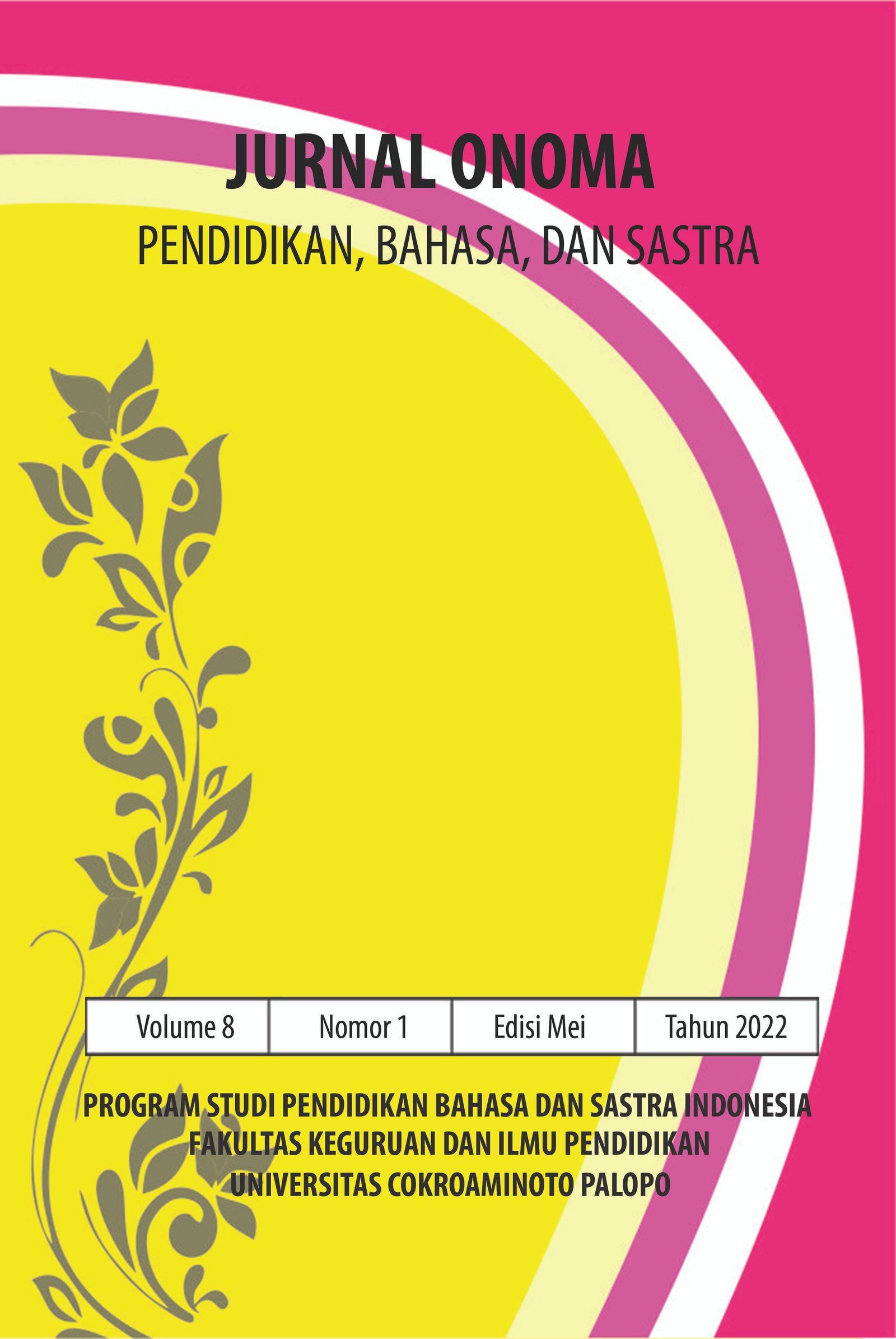Pengaruh Aplikasi Poro Belajar Bahasa Jepang Kanji terhadapKemampuan Kanji pada Mahasiswa Prodi Pendidikan Bahasa Jepang FKIP Universitas Riau
https://doi.org/10.30605/onoma.v8i1.1692
Keywords:
Learning Media, Kanji, ApplicationAbstract
Learning media is one of the supporting components that can help a learning process. One of the learning media that can be applied is the application media in learning kanji. The application is called "Poro Learn Japanese Kanji (Poro)". The purpose of this study was to see the effect of applying application media on kanji learning for class of 2019 students of Japanese Language Education, UniversitasRiau. This study used the experimental method. The data for this study were collected by distributing pre-test and post-test questions via Google Form. The results of this study indicate that of the 34 samples, 24 people experienced the effect of increasing value changes in learning kanji after the application of Poro application media. Then 3 people experienced a decrease in value, while the other 7 people did not have any effect.
Downloads
References
2021. Pengaruh Penggunaan Aplikasi Quipper School Terhadap Minat Belajar Bahasa Indonesia Siswa Kelas Xi Multimedia Smk Negeri 1 Pangkep. Universitas Muhammadiah Makassar.
Irsan, Muhammad. 2015. Rancang Bangun Aplikasi Mobile Notifikasi Berbasis
Android untuk Mendukung Kinerja di Instansi Pemerintahan. Jurnal Teknik Informatika Universitas Tanjungpura.
Pratama, Adri. 2012. Kanji E-Games Sebagai Media Pembelajaran Kanji. Bandung:
Universitas Komputer Indonesia.
Ramli, Muhammad 2012. Media dan Teknologi Pembelajaran. Banjarmasin:
IAIN Antasari Press
Sanjaya, Wina.2008. Strategi Pembelajaran Berorintasi Standar Proses Pendidikan.
Jakarta: Kencana Persada Media Group 1.
Sudjana, Nana dan Ahmad Rivai. 2010. Media Pengajaran. Dalam Amaliah, Rezky.
2021. Pengaruh Penggunaan Aplikasi Quipper School Terhadap Minat Belajar Bahasa Indonesia Siswa Kelas Xi Multimedia Smk Negeri 1 Pangkep. Universitas Muhammadiah Makassar.
Sudjianto, & Dahidi, A. 2004. Pengantar Linguistik Bahasa Jepang. Jakarta: Kesaint
Blanc.
Sugiyono.(2009). Metode Penelitian Pendidikan Pendekatan Kuantitatif, Kualitatif,
dan R&D. Bandung : Alfabeta.
(2011). Metode Penelitian Pendidikan Pendekatan Kuantitatif, Kualitatif,
dan R&D. Bandung : Alfabeta
(2019). Metode Penelitian Pendidikan Pendekatan Kuantitatif, Kualitatif,
dan R&D. Bandung : Alfabeta
(2019).Statistika Untuk Penelitian. Bandung : Alfabeta
Downloads
Published
How to Cite
License
In submitting the manuscript to the journal, the authors certify that:
- They are authorized by their co-authors to enter into these arrangements.
- The work described has not been formally published before, except in the form of an abstract or as part of a published lecture, review, thesis, or overlay journal.
- That it is not under consideration for publication elsewhere,
- That its publication has been approved by all the author(s) and by the responsible authorities – tacitly or explicitly – of the institutes where the work has been carried out.
- They secure the right to reproduce any material that has already been published or copyrighted elsewhere.
- They agree to the following license and copyright agreement.
License and Copyright Agreement
Authors who publish with Onoma Journal: Education, Languages??, and Literature agree to the following terms:
- Authors retain copyright and grant the journal right of first publication with the work simultaneously licensed under Creative Commons Attribution License (CC BY 4.0) that allows others to share the work with an acknowledgment of the work's authorship and initial publication in this journal.
- Authors are able to enter into separate, additional contractual arrangements for the non-exclusive distribution of the journal's published version of the work (e.g., post it to an institutional repository or publish it in a book), with an acknowledgment of its initial publication in this journal.
- Authors are permitted and encouraged to post their work online (e.g., in institutional repositories or on their website) prior to and during the submission process, as it can lead to productive exchanges, as well as earlier and greater citation of published work.

















